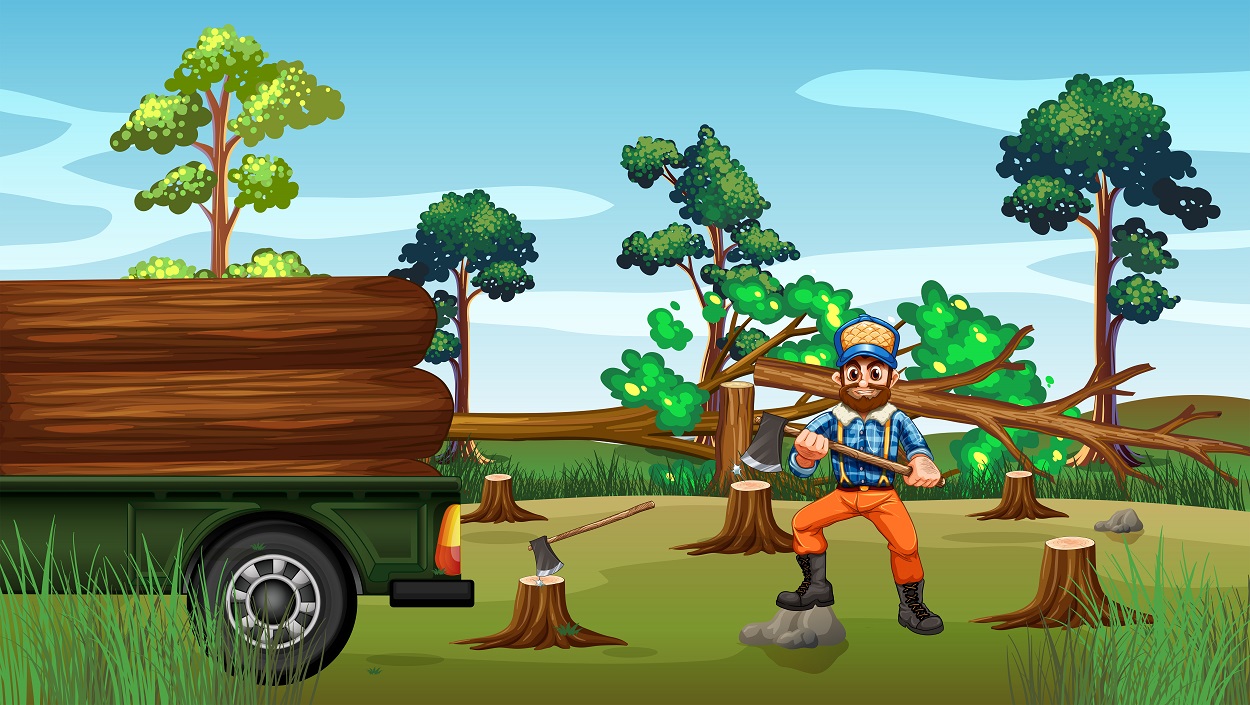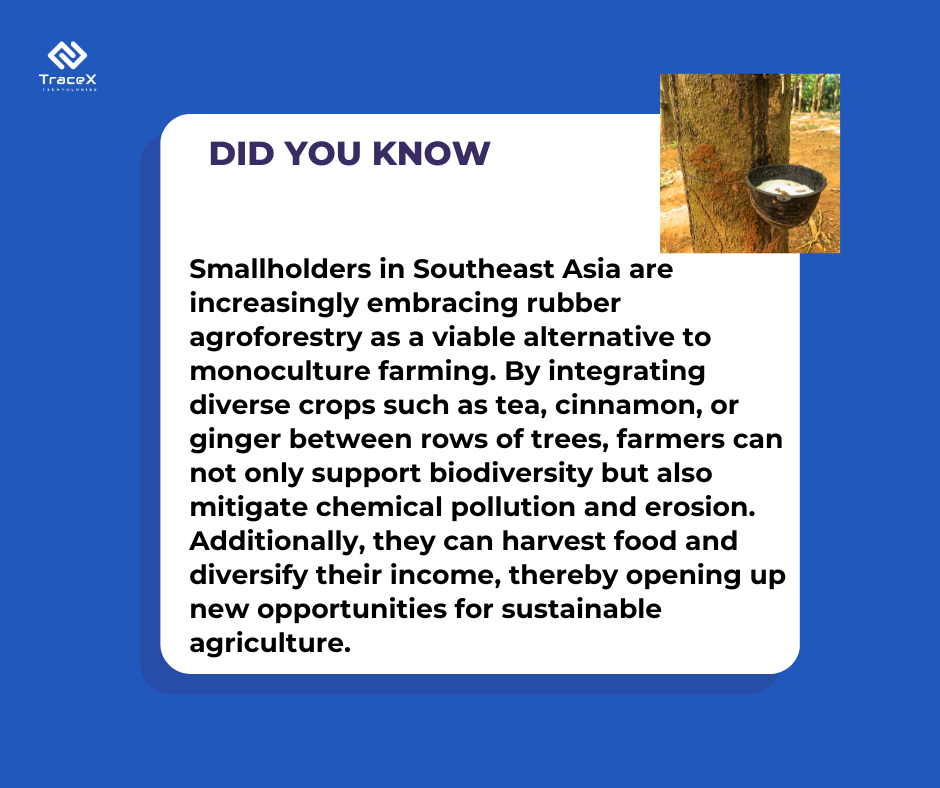Contact: +91 99725 24322 |
Menu
Menu
Quick summary: Explore the burgeoning trend of sustainable rubber cultivation in Southeast Asia. Learn how the region is embracing eco-friendly practices to meet the rising demand for responsibly sourced rubber products while ensuring long-term environmental and economic sustainability.

Sustainable rubber has become a focal point in today’s global consciousness on environmental sustainability, with industries, particularly in Southeast Asia, increasingly adopting eco-friendly practices to minimize their environmental impact.
Southeast Asia (Cambodia, Indonesia, Laos, Malaysia, Myanmar, Philippines, Thailand, Vietnam) produces 90% of the world’s natural rubber.
Rubber is a versatile material with a wide range of applications, from automotive tires to medical gloves, but its production often comes with significant environmental and social challenges. However, there’s a growing movement towards sustainable rubber production in Southeast Asia, aiming to mitigate these challenges and pave the way for a greener future.
Rubber production is a vital industry in Southeast Asia, particularly in countries like Thailand, Indonesia, and Malaysia, which collectively account for the majority of the world’s natural rubber production. The process typically involves tapping rubber trees to extract latex, which is then processed into various rubber products. While rubber is an essential commodity with numerous applications, its production has historically been associated with deforestation, habitat loss, and social issues such as land grabbing and labor exploitation.
Consumer awareness and demand for sustainably sourced products are increasing worldwide, presenting an opportunity for Southeast Asian countries to emerge as leaders in meeting these demands. By doing so, they can enhance market competitiveness and ensure long-term market access for their rubber goods.
A 2023 study published in Nature (Mongabay) found that over 4 million hectares (10 million acres) of forest have been cleared for rubber plantations in Southeast Asia since 1993.

Amidst these challenges, there is a growing recognition within the industry of the need for more sustainable practices. Sustainable rubber production entails a holistic approach that takes into account environmental, social, and economic considerations. One key aspect of sustainable rubber production is agroforestry, which involves integrating rubber trees with other plant species to mimic natural ecosystems. Agroforestry not only helps preserve biodiversity but also provides additional sources of income for farmers through the cultivation of diverse crops such as fruits, vegetables, and timber.
Moreover, sustainable rubber initiatives often prioritize the adoption of organic farming practices and the reduction of agrochemical use. By minimizing reliance on synthetic inputs, farmers can protect soil health, preserve water quality, and reduce their ecological footprint. Additionally, sustainable certification schemes such as the Forest Stewardship Council (FSC) and the Roundtable on Sustainable Palm Oil (RSPO) play a crucial role in promoting environmentally and socially responsible rubber production by providing standards and guidelines for producers to follow.
Certifications and standards play a pivotal role in the journey towards sustainable rubber production. They serve as beacons of assurance for consumers, ensuring that the rubber they purchase adheres to specific environmental, social, and ethical criteria. In South East Asia, two prominent certifications, the Forest Stewardship Council (FSC) and Rainforest Alliance, have emerged as guiding lights in the pursuit of sustainable rubber practices.
The Forest Stewardship Council (FSC) is a globally recognized certification that focuses on promoting responsible forest management. While traditionally associated with timber and wood products, FSC has extended its scope to include rubber, acknowledging the critical importance of sustainable practices in the rubber industry.
Organisations like the Forest Stewardship Council are working to improve traceability for smallholders – responsible for 85% of global production – and ensure their rubber can be sold in Europe.
FSC certification for rubber involves rigorous assessments of the entire supply chain, from the rubber plantation to the final product. Key criteria include the preservation of biodiversity, protection of ecosystem services, adherence to labor rights, and respect for the rights of indigenous communities. By obtaining FSC certification, rubber producers signal their commitment to sustainable and ethical practices, gaining the trust of environmentally conscious consumers.

The Rainforest Alliance is another influential certification that focuses on sustainable agriculture, including rubber cultivation. The Rainforest Alliance certification places emphasis on environmental conservation, social equity, and economic viability. By obtaining this certification, rubber producers demonstrate their dedication to minimizing environmental impact, fostering fair labor practices, and promoting community well-being.
Rainforest Alliance certification also encourages the adoption of climate-smart agricultural practices, helping rubber farmers adapt to changing climate conditions and contribute to climate change mitigation efforts. The familiar Rainforest Alliance seal on rubber products provides consumers with a visual cue, assuring them that their purchase aligns with sustainability principles.
Discover how certifications pave the way for seamless compliance with the EU Deforestation Regulation
Ensure your business stays ahead in the sustainability game
Technology and innovation also play a significant role in advancing sustainable rubber production. For instance, research is underway to develop drought-resistant rubber tree varieties that can thrive in changing climatic conditions, reducing the need for irrigation and water resources. Furthermore, advances in agricultural practices, such as precision farming techniques and remote sensing technologies, enable farmers to optimize resource use and minimize waste.
Moreover, blockchain technology is increasingly being used to enhance transparency and traceability in the rubber supply chain, allowing consumers to track the journey of rubber products from farm to market. By providing greater visibility into the production process, blockchain helps ensure that sustainable standards are upheld and that workers are treated fairly throughout the supply chain.
TraceX supply chain traceability solutions play a crucial role in promoting sustainability and transparency in the rubber industry, helping companies meet consumer demands for eco-friendly products while also achieving their sustainability goals.
TraceX provides end-to-end visibility into the rubber supply chain, allowing stakeholders to trace the journey of rubber products from production to distribution. This transparency helps ensure compliance with sustainability standards and enables better decision-making.
With TraceX, stakeholders can verify the quality and authenticity of rubber products, including their origin, production practices, and environmental impact. This helps build trust among consumers and enhances the reputation of sustainable rubber producers.
By collecting and analyzing data throughout the supply chain, TraceX enables stakeholders to identify inefficiencies, optimize processes, and improve overall sustainability performance. This data-driven approach empowers companies to make informed decisions and drive continuous improvement in their operations.
Achieving widespread adoption of sustainable rubber practices requires collaboration among various stakeholders, including governments, industry players, non-governmental organizations (NGOs), and consumers. Governments can play a crucial role in providing policy support and incentives for sustainable agriculture, while industry actors can invest in research and development initiatives to drive innovation in the sector.
NGOs and civil society organizations also play a vital role in raising awareness about the importance of sustainable rubber and advocating for the rights of smallholder farmers and indigenous communities affected by rubber production. Consumers, too, have the power to drive demand for sustainable products by making informed purchasing decisions and supporting brands that prioritize environmental and social responsibility.
The transition towards sustainable rubber production in Southeast Asia represents a significant step towards building a more environmentally resilient and socially equitable future. By embracing practices such as agroforestry, organic farming, and technological innovation, the rubber industry can minimize its environmental footprint, protect biodiversity, and improve the livelihoods of millions of smallholder farmers across the region.
However, achieving true sustainability requires collective action and commitment from all stakeholders involved. Governments, industry players, NGOs, and consumers must work together to create an enabling environment for sustainable rubber production and ensure that the benefits are shared equitably among all members of society. By doing so, we can drive positive change and pave the way for a greener, more sustainable future for generations to come.
